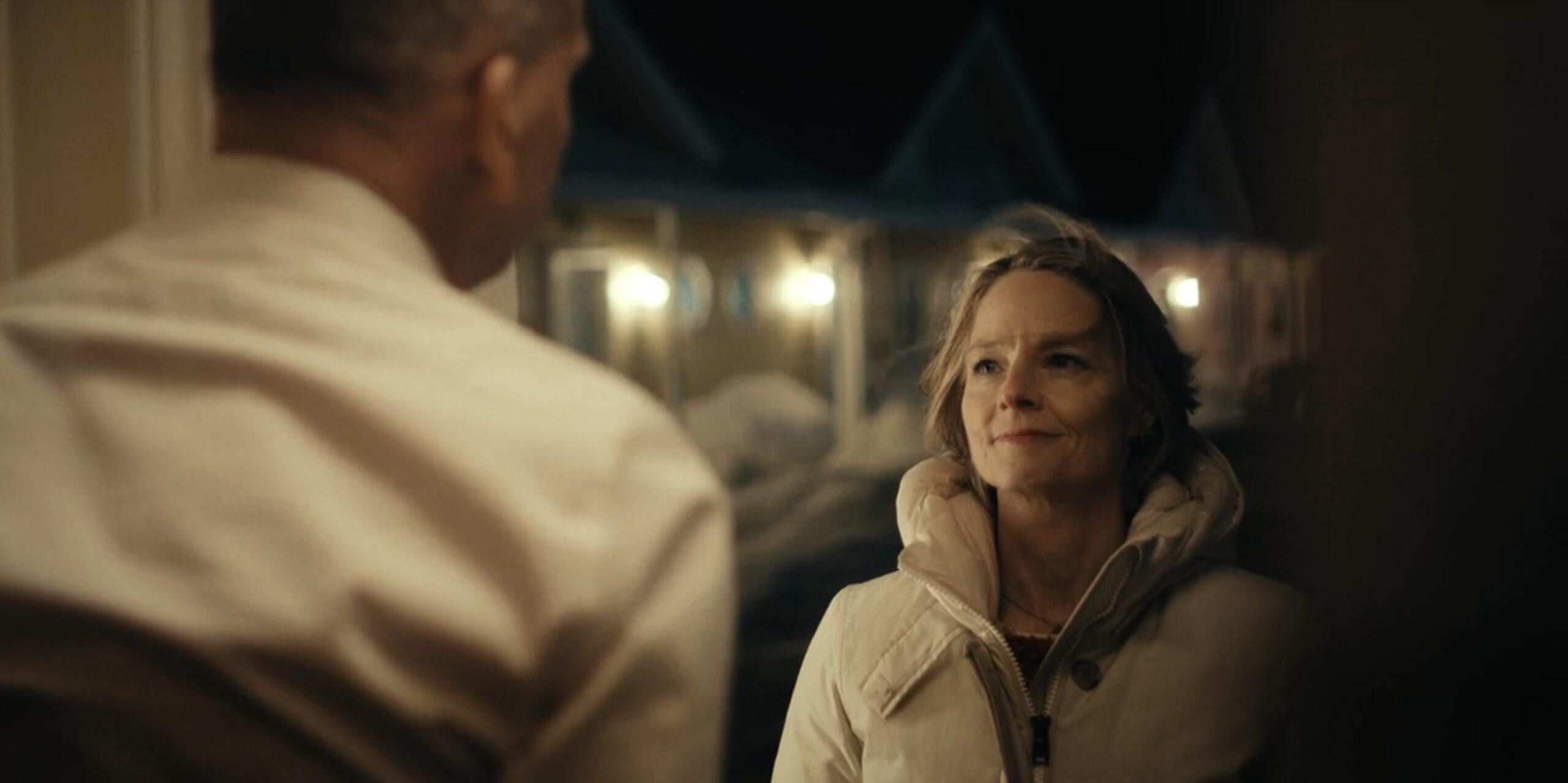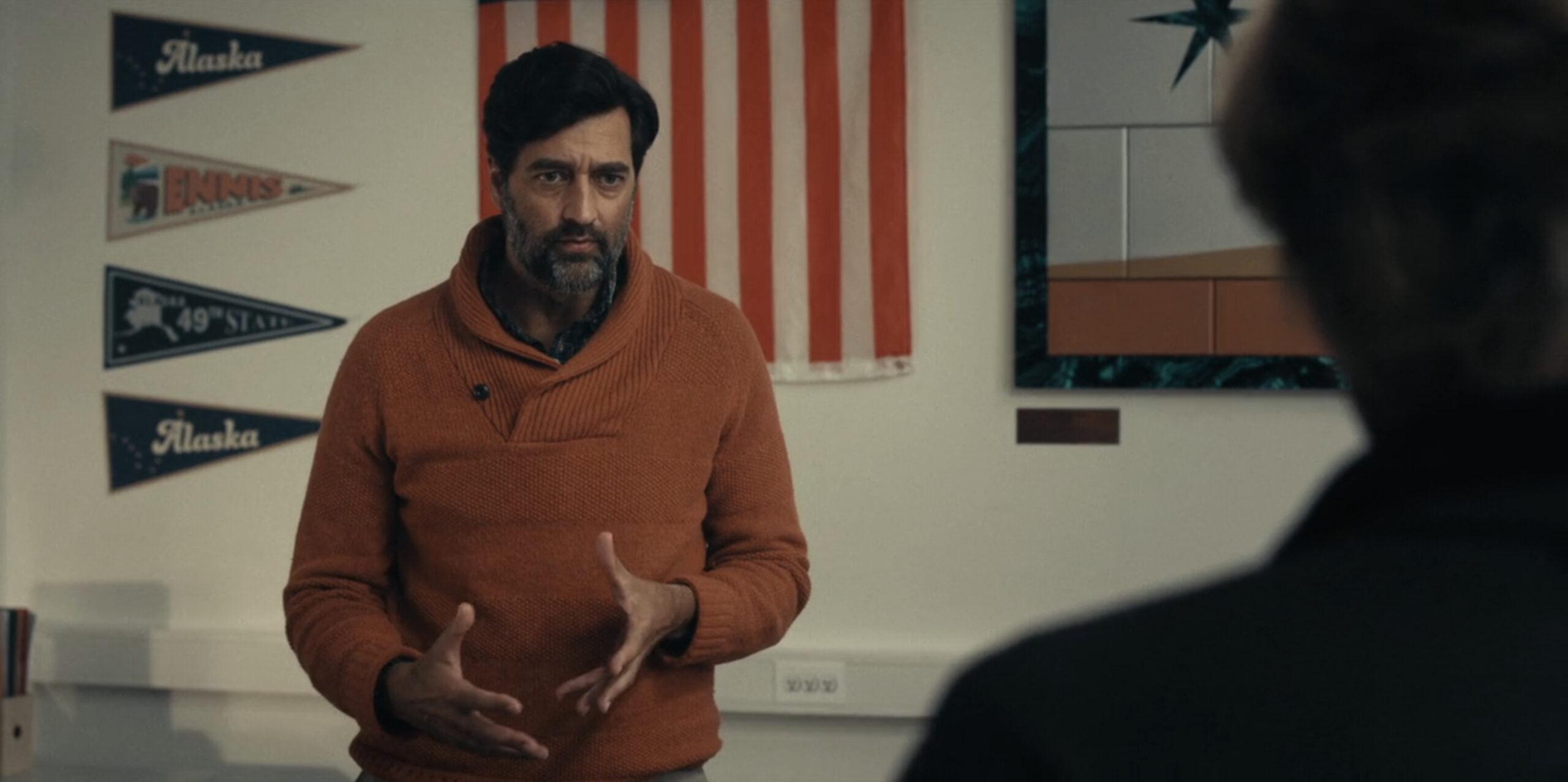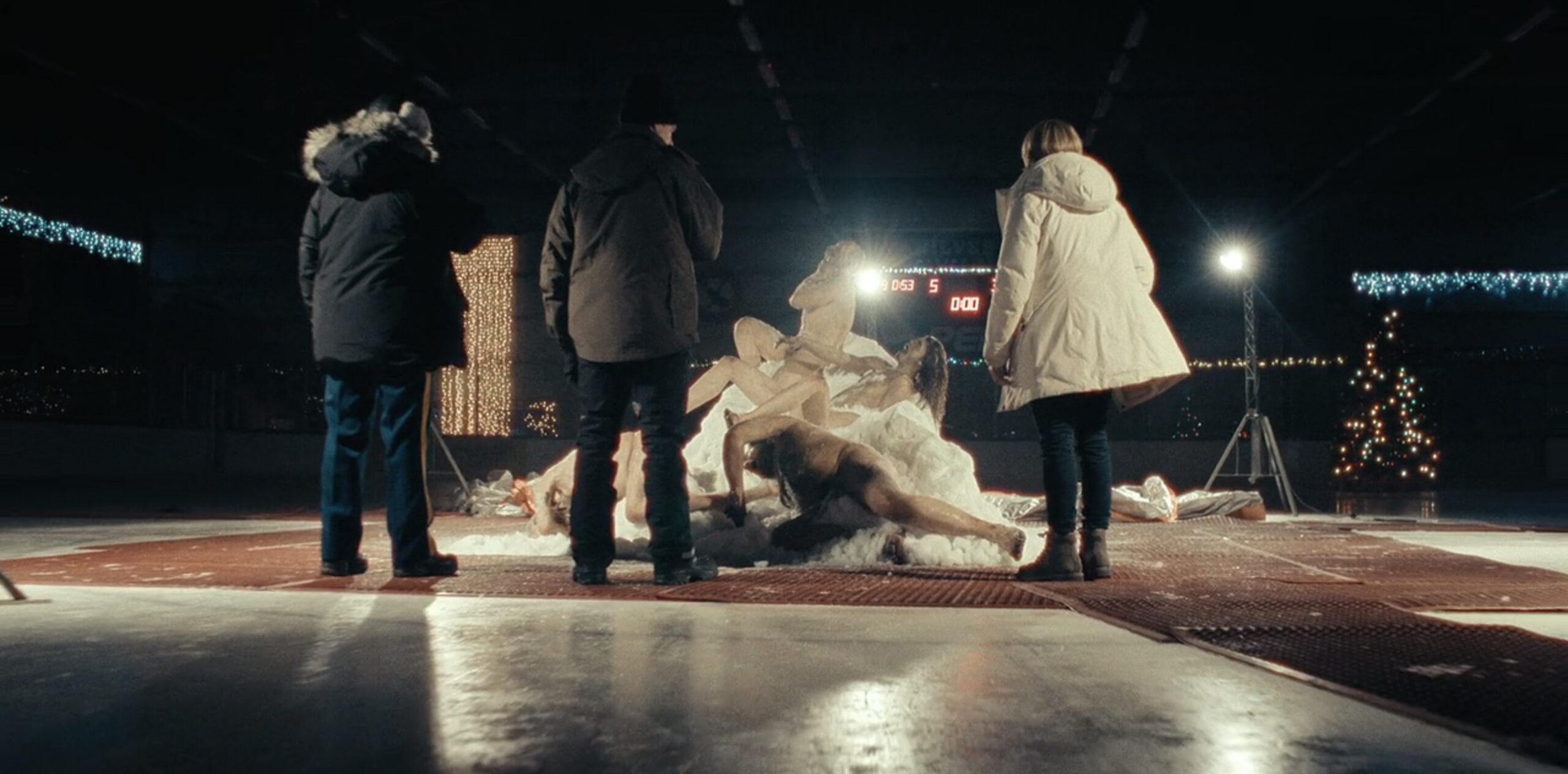Who Done It? Breaking Down the Second Episode of ‘True Detective: Night Country’
Episode 2 of ‘True Detective: Night Country’ brings new faces and suspects, and several revelations

After four years away, True Detective returns for a new season with a sinistrous subtitle. We’re in Night Country now, and we’ll be following along each week to try to piece together, with the help of police chief Liz Danvers and detective Evangeline Navarro, who perpetrated those gruesome crimes in Ennis, Alaska. Read along for a breakdown of Episode 2.
Who Done It?
Last week’s premiere of Night Country set the tone for another season of True Detective defined by mysterious murders, obsessive detectives with troubled pasts, creepy symbolism, and a community full of complicated relationships and long-held grudges. Just two episodes in, Night Country is still making introductions and laying the foundation for the rest of the season. But with many new faces and suspects, and several revelations about the killings at the Tsalal Arctic Research Station and the unsolved murder of Annie Kowtok, this week’s installment has given us a lot to work with.
Beyond all of the finer details of this shit bowl of a case, as Ennis police chief Liz Danvers (Jodie Foster) calls it, the second episode provides key insights into the pasts of our two leading detectives, Danvers and trooper Evangeline Navarro (Kali Reis). We see glimpses of Danvers’s child Holden (who presumably died in some sort of car accident) and how much that loss has altered her capacity to be a mother and caretaker to Leah (Isabella LaBlanc). We get a better sense of Navarro’s relationship with her sister, Julia (Aka Niviâna), and their shared trauma from their childhoods with their mother, who suffered from serious mental health issues. Despite Danvers’s and Navarro’s individual challenges and their contentious shared history, by the end of the episode, they’ve agreed to set their differences aside to solve their respective cases together, and they’ve already picked up some big leads.
After Rose Aguineau (Fiona Shaw) got some help from the spirit of Travis Cohle (Erling Eliasson) to locate the frozen corpses of the Tsalal scientists at the end of the premiere, the outlines of this case—and how it connects to Kowtok’s killing—begin to take shape in Episode 2. Among the most shocking discoveries: Of the eight bodies that were expected to be found, only seven were recovered. And in an incredibly disturbing moment early in the episode, one of those seven turned out to still be alive: Anders Lund, the director and founder of the Tsalal research station.
As a particularly incompetent Ennis police officer accidentally snapped off one of Lund’s arms like a Pocky stick, Lund woke up—still frozen in the ice—and let out a primal, guttural scream. The last we hear, he’s in a medically induced coma about to enter surgery, where he’ll have to have at least one leg amputated as well.
Most of the other scientists weren’t as lucky (if we can even call Lund that). After Danvers uses the local ice rink to thaw the remaining corpses that were frozen together in one unholy block of flesh, the Ennis police identify the rest of the Tsalal victims: Ralph Emerson, Anton Kotov, Li Jie, Lucas Merens, Facundo Molina, and Veer Mehta. The only scientist who’s unaccounted for? Raymond Clark. And he’s just become our primary suspect.
1. Raymond Clark
Even before we really knew anything about any of the Tsalal scientists, Clark was a person of interest. When Molina was recording a cooking video in the research facility’s kitchen area early in the season premiere, Clark was the guy who was convulsing in the background before he turned around to say, “She’s awake,” just as the lights in the building cut out.
As Clark’s biography on the Tsalal website shows, the Irishman is the one scientist on the research team who specializes in paleomicrobiology, which is the study of microorganisms associated with prehistoric material. Before joining Tsalal in 2005, Clark’s research career “focused on understanding the molecular basis of colonization and infection by Staphylococcus aureus.” In simpler terms, Clark essentially studied staph infections. We’ll circle back to all of this later.
Through a series of interviews with the Tsalal supply guy and the facility’s cleaning crew in the second episode, Danvers and Pete (Finn Bennett)—her protégé—piece together the dynamic that Clark had with his coworkers and gain a better understanding of who he is. The consensus is that Clark was always a bit strange. He was the loner of the group, isolated from the other scientists, who would choose to just ignore his behavior even when he seemed particularly off. But the key discovery is that Clark has a very familiar symbol tattooed on his chest: the same spiral that has appeared throughout True Detective since the first season. The spiral was also tattooed on Kowtok’s body and drawn on Lund’s forehead.
When Danvers sees a photo of Clark’s tattoo, she can no longer deny that the Tsalal and Kowtok cases are connected, and she finally agrees to team up with Navarro again. As Clark’s credit history reveals, he got the spiral symbol tattooed on his chest in 2017, six years earlier and just four days after Kowtok died. Even more suspicious, Clark purchased a trailer to conceal his secret relationship with Kowtok. Inside, Navarro and Danvers find a wild, disturbing tableau: animal bones, disturbing drawings on the walls, Annie’s missing cell phone, some sort of dummy (or mummy?) wearing clothes in a shrine-like display seemingly dedicated to Kowtok, and a massive spiral etched into the roof. It gives off some serious True Detective Season 1 vibes, with the kind of creepy latticework and iconography that Rust Cohle and Marty Hart encountered in Louisiana.
When the frozen corpses finally thaw at the end of the episode, and Clark is nowhere to be found, Danvers speculates that the rogue scientist could have been separated, while Navarro is certain that he’s still alive. His work in paleomicrobiology and his focus on studying staph infections raise all sorts of questions about what he’s been up to at Tsalal over the past 18 years. He and his fellow scientists have locked themselves away in this Arctic research station since 2005 to study ice cores that they hope can help explain the origins of life. What could Clark have discovered that could have shaken him to the point that his research files are filled with disturbing handwritten notes with repeated phrases like “I can hear her moving outside” and “her eyes,” plus one bolded line that reads: “Oh god never sleep”?
Beyond that, how and why did Annie get involved with Clark in the first place? Did Clark use whatever bacteria he found in the ice cores to experiment on her in some way? Did he kill Annie and freeze her tongue for safekeeping afterward? And what do the spiral symbols have to do with it all? Is Annie the one who Clark was referring to when he said, “She’s awake”?
Coupled with whatever discovery (or dark force) has disturbed Clark, he appears to have a motive to kill his coworkers, who have ignored all of the signs that he’s been struggling. (And he sure as hell looks guilty when it comes to the death of Annie.) But two episodes into the season, Clark feels like a classic example of an obvious suspect who is introduced too early in the story to end up being the actual culprit. There’s still a lot to learn about Clark as the hunt for his whereabouts begins, but right now, finding him is Danvers and Navarro’s best hope for a breakthrough outside of Lund’s forthcoming interview. That is, assuming the Tsalal founder survives the surgery and can even bring himself to speak about whatever’s happened to him.
2. Detective Hank Prior
Hank Prior (John Hawkes) is our one named holdover from last week’s suspect list, as he continues to be extremely sketchy. At first glance, Prior appears to be a little pathetic, maybe, but harmless enough. He seems mediocre (at best) at his job, his ex-wife thought he was an awful guitar player, and he’s doing some light catfishing to fool his Russian fiancée into thinking he’s much younger than he actually is. (Then again, “Alina” is quite likely catfishing him: When Hank and his supposed bride-to-be are texting in Episode 2, Alina expresses concern about her mother, and Hank says he’ll send her more money for her mother’s medication. If Alina is a scammer, that doesn’t say much for Hank’s detective skills.) But his darker side begins to emerge in the second episode.
In the season premiere, Prior lied to Danvers about having Kowtok’s case files at his house. He pretends he doesn’t remember if they’re there, but when he discovers in Episode 2 that the box is missing from his home, Hank immediately knows what it contains and who took it. Soon after, he confronts Pete at the ice rink and smacks him across the face. (Based on how Leah later reacts to the bruise forming on Pete’s cheek, it doesn’t seem like this is the first time that Hank has done something like this. “He’s an animal,” Leah says, without having to ask who did it.) Hank has a menacing look in his eyes as he reprimands his son for this betrayal. “Danvers doesn’t own you,” he tells him. “You have a family, and she’s not it. Blood is blood, Peter. Remember that.”
There’s still a lot we don’t know about Hank and Danvers’s history, but it’s clear that Hank isn’t exactly a fan of his boss. In the first episode, Danvers tells Pete that Hank had to take Navarro off the Kowtok case after Navarro started stirring up trouble in the community during her investigation. It therefore seems likely that Hank was the previous police chief in Ennis before Captain Connelly (Christopher Eccleston) appointed Danvers to the job. That would explain his somewhat resentful attitude toward Danvers, but it doesn’t necessarily account for his protectiveness of the Kowtok files.
Prior doesn’t seem capable of pulling off a crime as flashy, gruesome, and seemingly imaginative as the killings of at least six of the Tsalal scientists under extraordinary circumstances. However, that doesn’t mean that he wasn’t involved in Annie’s death and investigation in some way, if only in the form of a cover-up. If the Ennis police force can feel relaxed enough around half a dozen frozen corpses to pose for selfies with them (Prior defends their behavior as just “blowing off steam”), there’s no telling what these law enforcers are capable of or what transgressions they may be willing to overlook.
3. Chuck Mosley
Although Chuck Mosley (Edward Fletcher) made a brief previous appearance outside of the Ennis mines, where he works with Annie’s brother, Ryan (Phillip Blanchett), Episode 2 is our real introduction to the character. And Chuck makes quite the first impression.
When Navarro is questioning Ryan about Clark outside Qavvik’s bar, Mosley attempts to end their conversation, and he blatantly lies to Navarro when she asks him whether he recognizes Clark in a photo. As a fight erupts inside the bar over the water issues in the villages stemming from the area’s proximity to the mines, Mosley throws himself into the middle of the dispute, screaming about how the mines are responsible for feeding Ennis’s families and paying for their children to go to school. He then storms out of Qavvik’s, pushing past Navarro’s sister and skipping out on his bar tab in the process.
Later, Chuck reluctantly reveals to Navarro that he did recognize the missing Tsalal scientist after all: About seven years earlier, Mosley’s cousin sold Clark an old trailer, the same one in which Navarro and Danvers discovered all of Clark’s disturbing paraphernalia. Mosley claims that he lied because he doesn’t like Navarro, but as the trooper seems to correctly deduce, the real reason is that Chuck didn’t like Annie. “You’re OK with what happened to her,” Navarro tells him. Mosley’s only response is to avert his eyes.
Like Prior, Chuck doesn’t seem smart enough to pull off as complex a crime as the one involving the Tsalal scientists—but it isn’t unreasonable to think he could have been at least partially responsible for Annie’s death. His violent nature and the fact that he’s making an effort to obstruct Navarro’s investigation make him a suspicious character, at least, especially if he’s OK with Annie’s brutal murder despite being so close to her brother.
While Mosley seems like a pretty weak candidate to be our mystery killer, he’ll still be another important figure to watch as tensions over the environmental issues that the mine is creating in Ennis continue to rise.
4. Someone we don’t know
In just one episode, Clark has transitioned from one of the assumed victims to suspect no. 1. A lot can change quickly in True Detective, and it’s too early to tell who our mystery killer(s) might actually be, even if all signs are pointing to Clark. With the heavy emphasis on the supernatural in the first two episodes, as well as all of the horror influences that have been baked into creator Issa López’s story, there’s no telling whether there’ll even be a living human being at the bottom of all this. The true killer might not have been introduced yet, but a strange, isolated event has turned into a full-blown investigation that reaches back nearly a decade. We’ve been presented with a lot of evidence already, but a lot of information is still missing. As Danvers would say, maybe we’re just not asking the right questions.
Galaxy-Brained Theory of the Week
Over 10 years after the events of True Detective Season 1, Rust Cohle is back. And he’s out here killing scientists. Grab your tinfoil hat and bear with me.
When Rust survived his confrontation with Errol Childress at the end of the first season, he wasn’t satisfied that he and Marty had finally gotten their guy. Instead, he dwelled on the fact that some members of the cult were still out there. Louisiana senator Edwin Tuttle denied any connection to Childress and his crimes, allowing the remnants of the Tuttle family to live on. As Pete mentions in the second episode of Night Country, Tsalal is funded by a shell company owned by Tuttle United. It sounds like the Tuttle family’s power and influence have only grown since Rust and Marty closed their case in 2012. What if Rust has returned home to Alaska—just as he did in the 2000s—and is on a killing spree to rid the world of the darkness that the Tuttle family has spread? With the dangerous road he was going down back in Season 1, it doesn’t seem that far-fetched that his encounter with Carcosa and the Yellow King could have changed him for the worse.
Now, do I think Rust is actually involved in our current mystery? Not really. I was hesitant to even mention the name Rust Cohle in this week’s recap, as I’m afraid that too much of the discourse around this season will veer toward speculation about whether Matthew McConaughey will make an appearance, when the focus should be on the merits of this stand-alone narrative. But Night Country is making it too tempting to draw these types of conclusions.
With the help of Rose’s visions, Rust’s father, Travis, has provided the Ennis police with their most important lead so far: the frozen bodies of the Tsalal scientists. Travis (and his impressive interpretative dancing) has been crucial to Danvers’s investigation so far, and I have a feeling that wasn’t the last we’ll see of him. Between Travis, the influence of the supernatural, and the spirals of it all, Season 1 has had a significant impact on Night Country already. And there may be more connections to come.
Vikram’s Alaska Corner
True Detective: Night Country takes place in the cold fringes of the Last Frontier, otherwise known as Alaska. (Never mind that the season was filmed in Iceland.) The Ringer’s own Vikram Patel is a former resident of the state who still spends his winters there. Each week, we’ll pose a question to Vikram about his second home as we look to learn more about the local geography and culture.
Daniel: In Night Country, it’s been both fascinating and disorienting to watch as characters go about their lives in the perpetual darkness of the winter, creating a unique challenge for the viewer to discern what time of day it is in any given scene. Vikram, I know that you mostly lived in Anchorage, so you haven’t experienced a true polar night, but I’d still love to hear more about your experiences pertaining to the extremes of daylight in the Alaskan winters and summers.
How do you learn to adapt and orient yourself in your daily life when the days (or nights) are so long?
Vikram: I have a confession: I just love the dark!
I live in sunny Los Angeles, and it’s just a little too bright for me. I often wear sunglasses when everyone else is just fine walking around with their corneas exposed. My secret theory is that I have extra rods and cones in my eyeballs—I pride myself on being able to read very small print. But that sensitivity cuts both ways: Too much light hurts! I am kind of a vampire that way. And that concludes Vikram’s Optometry Corner.
In Anchorage, which is about 5 degrees of latitude south of the Arctic Circle, the shortest day is around five and a half hours long. And while that suits me just fine, the long nights—and long winters—can wear on some people.
So to answer your question about the darkness, I asked my best friend Tara to share some strategies she’s used to try to cope with all the darkness. Hi, Tara!
Tara: Hi, Vik! (Sorry, nobody really calls him “Vikram” in Alaska.)
Vikram: Answer the prompt, please.
Tara: OK, OK, here are some of my favorite strategies to combat the long nights:
- Go outside. Fresh air and a little physical activity are surefire cures for the winter blues. Ice-skate on frozen lagoons, cross-country ski on lighted trails, or take your fat-tire snow bike (that’s a thing up here) out for a spin. Not feeling trapped indoors provides a big psychological lift.
- Go “Outside.” I realize it sounds like I’ve caught cabin fever and started repeating myself. But in Alaska, “Outside” is shorthand for anywhere outside Alaska. Planning a trip to somewhere warm and sunny not only breaks up the long winter, but also recharges your tolerance for darkness.
- Get a happy lamp. A happy lamp is basically a bright-ass light that you sit in front of every morning while you’re drinking your coffee and trying to beat Vik’s Wordle score. In terms of brightness, it feels like staring into the high-beam headlights of a truck. A few minutes in front of a happy lamp can trick your brain into thinking it’s daytime, kick-starting your day.
- Pray for snow. This last one isn’t so much a strategy as, well, a PSA for people who live in warm weather: Snow is white and very reflective! And while it may seem counterintuitive to hope for even MORE evidence of winter, snow on the ground (not to mention the houses, cars, and trees) makes everything feel brighter outside, even if the sun is down. It’s kind of magic.
If you follow these steps, you’ll have no reason to be afraid of the dark!
Vikram: Unlike Tara, wintering in Alaska—embracing the dark of it all—comes pretty easy to me. But I have a little more trouble during the summertime, when it’s the daylight that overstays its welcome. On the longest days of the year in Anchorage, the sun can be in the sky for over 19 hours, and even in those limited “night” hours, it’s never truly dark.
The perks of the midnight sun are undeniable: evening hikes, so many more hours for weekend rafting and camping, and a circadian energy boost that makes you feel a little bit invincible.
At least, at first.
The downside to all that light is that it’s tough to get enough sleep! My first summer in Anchorage left me so behind on winks that I was properly cranky by mid-July. Over the years, I tried a few tricks to get to sleep earlier. I wore eye masks at night, but I couldn’t fall asleep with all that pressure on my eyes (see above: I have very sensitive eyes!). I bought blackout curtains for my bedroom, which helped, but you can always see the edges of light creeping around them. And even then, there’s something else going on: Just because you walk into a dark room at 10 p.m., that doesn’t mean your brain forgets that, moments earlier, it looked like noon outside.
In the end, what worked best for me was something completely out of my control: I got older. Even with the sunlight fooling my internal clock, my 40-something body is happy to quit on the day sooner than it used to. That’s my best advice to you, Daniel: Lose some of your youthful vigor, and you’ll have no reason to be afraid of the light.
Iconic True Detective Looks of the Week
Underneath the true crime mysteries at the forefront of each season, True Detective is admirably devoted to capturing the aesthetics that define each of its many eras. With that comes some pretty incredible costume and makeup work, which we’ll be highlighting throughout the season.

I’m a big fan of Danvers’s white coat in this episode, and Captain Connelly certainly seems to be as well. This man opened up the door to find Danvers standing there in the cold and immediately knew what was about to go down. Now, I don’t know if the coat was the main reason for that, but I’m not saying it wasn’t, either.

Moving on to another of Danvers’s past (or present) romantic partners, here we have Adam Bryce (Donnie Keshawarz). This Ennis High School teacher may not command much respect from his students, but the guy has a strong sweater game based on this very limited sample size. And for that, he’s good enough to earn some respect from me—at least for this week. Let’s see what else is going on in Mr. Bryce’s wardrobe in the episodes to come.

OK, so I wouldn’t qualify this as a “look,” per se, as the six men in this frozen corpsicle are all very much naked. But this is definitely an iconic, haunting True Detective image to close out another riveting episode. Now please excuse me while I try to erase it from my mind until we all return to this shit bowl next week.



